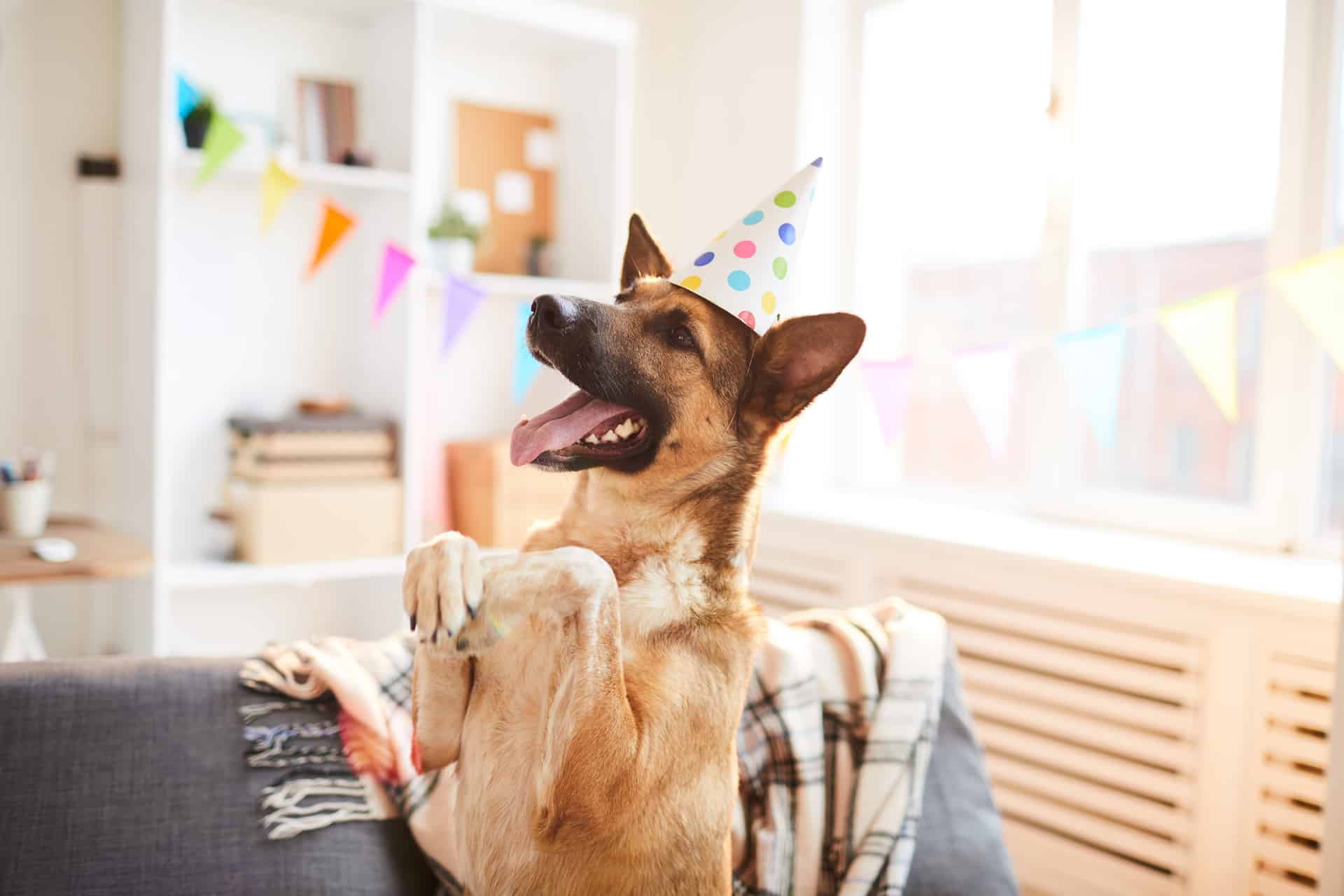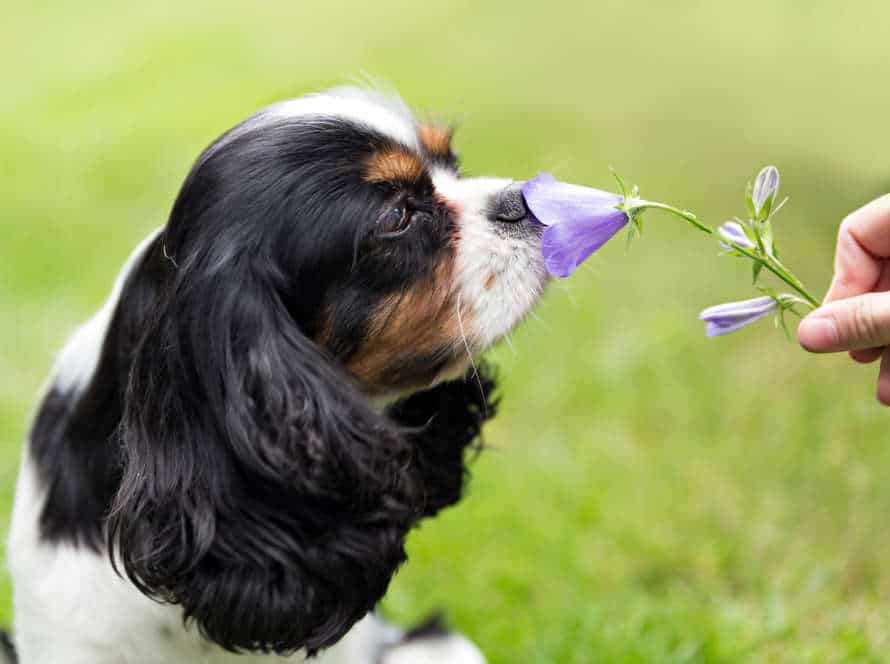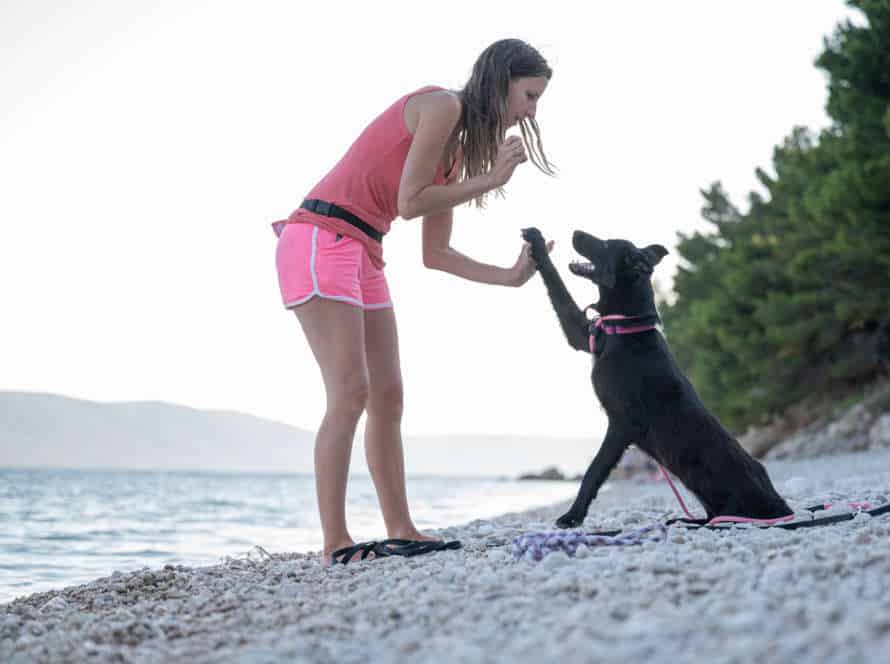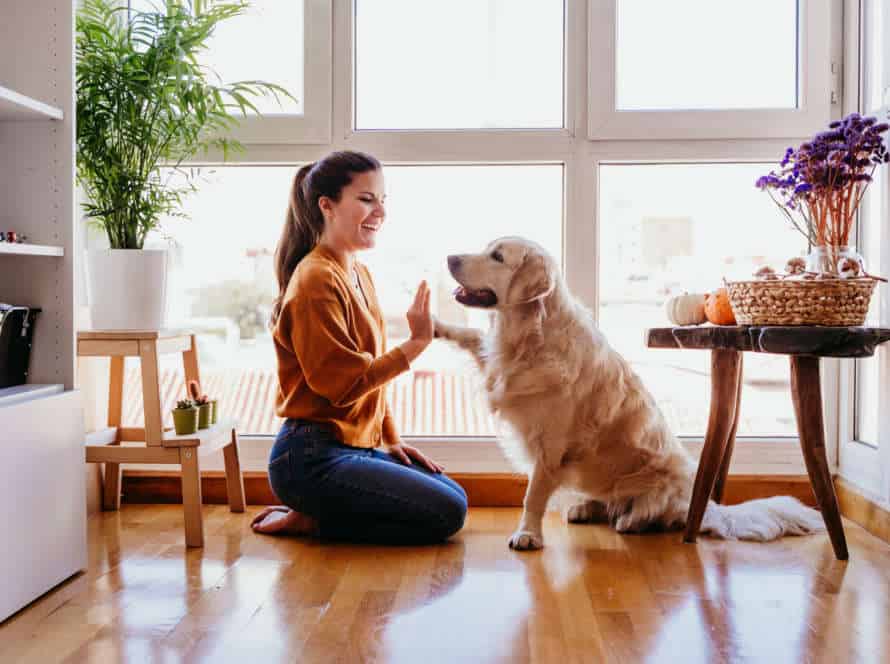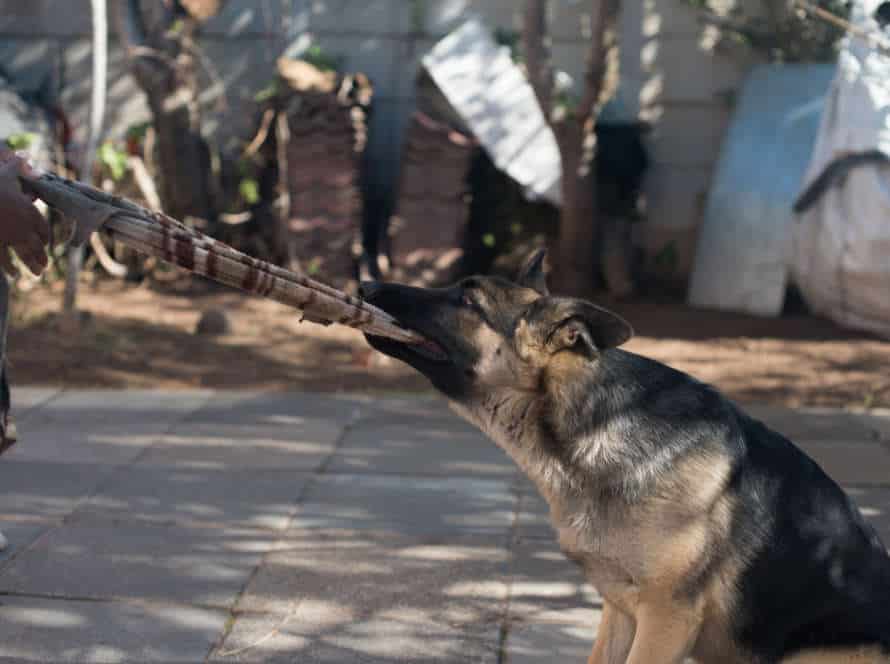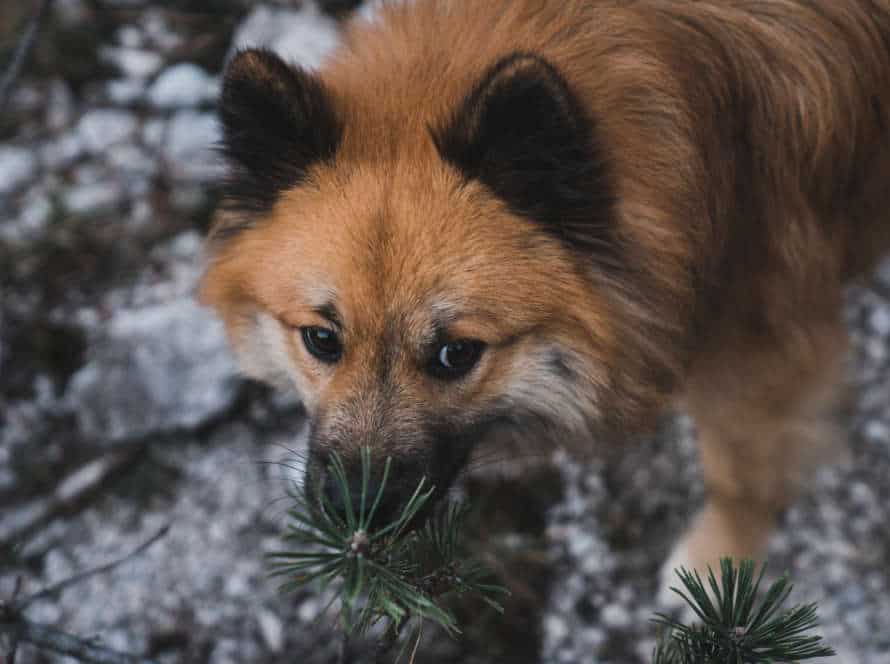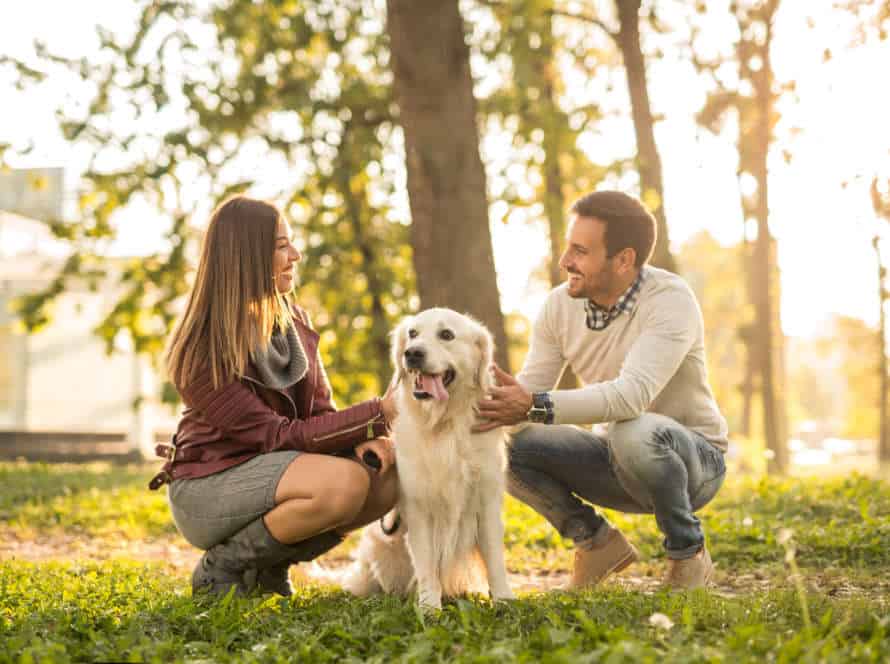Canine Choreography: Train Your Dog to Dance
Training your pup to dance is a fun way to connect with your furry friend. Plus, they learn new skills and get exercise. Here are some tips to help you out:
- Begin with basic commands like sit, stay, lie down and come.
- Use treats, praise and petting to motivate them during training.
- Start with simple moves like twirls or spins and make it harder over time.
- Incorporate natural behaviors, like jumping or paw-shaking, into the routine.
- Practice in a quiet place, so Fido can focus.
- Be patient and persistent, and you’ll both have a blast!
Pro tip: Always warm up their muscles and joints before dancing, to avoid injury.
The Art of Dog Dancing
Dog dancing is a blast! It’s energizing for both humans and dogs. Through it, you and your pup build communication, trust, and teamwork. With attention and practice, you can teach your pup to dance to any tune. From hip-hop to classical, you and your pup can choreograph a routine or enter a dog dancing competition. Let’s get into the art of dog dancing and discover some tips and strategies to start you and your pup off.
What is Dog Dancing?
Dog Dancing, also known as Canine Freestyle, is a sport that involves obedience training, tricks, and choreography. There are two categories: Musical Freestyle and Heelwork-to-Music. Musical Freestyle allows for more creative freedom and a variety of musical styles and movements. Heelwork-to-Music has stricter guidelines and specific moves.
Dog Dancing has physical and mental benefits for both dogs and owners. It increases coordination, flexibility, and balance for dogs. For handlers, it provides exercise, relaxation, and enjoyment.
Remember to make sure your dog is comfortable with all of the movements and has proper training before creating a routine.
Benefits of Dog Dancing
Dog dancing — also known as canine freestyle — is a fun and inventive activity with lots of advantages for both dogs and their owners. This special form of training combines obedience, dance, and music to create an enjoyable and interactive experience that reinforces the bond between dogs and their owners.
The benefits of dog dancing are plentiful: it offers mental and physical stimulation, improved flexibility and coordination, enhanced obedience and behaviour, and increased socialization skills. Plus, dog dancing is a great way to get exercise, foster trust, and strengthen the relationship between owners and their furry pals.
To begin with dog dancing, owners should start by teaching their pup basic obedience and socialization techniques. Then, they can show them basic dance steps and slowly build up to more complex moves. With patience, practice, and dedication, owners and their dogs can enjoy all the rewards of this exciting and enriching activity.
Different Styles of Dog Dancing
Dog dancing is a great way to have fun and bond with your pup, while getting some exercise. There are multiple styles to choose from – each with its own choreography and music.
- Freestyle – this one lets you show off your dog’s personality and skills, through various music and movements.
- Heelwork-to-Music – this style focuses on precision and coordination. You and your pup will perform heelwork patterns to music.
- Musical Canine Freestyle – here, you get to mix the skill of freestyle with the accuracy of heelwork-to-music. Stunts and tricks are included in the choreography.
- Rally-FrEe – a combination of rally obedience and freestyle, with traditional rally exercises and freestyle elements.
- K9MF – this one involves one or more humans and dogs. They’ll perform a dance to music, with synchronised heelwork and partnering moves.
Whichever style you choose, you and your pup can enjoy exercising together!
Training Your Dog
Train your pup to dance? Sure! Dog dancing – or canine choreography – is a great way to bond with your pup. It’ll take dedication, consistency, and some creativity. Here’s how to get started:
- Learn the right techniques.
- Put in some patience.
- Teach your pup to learn and perform a dance.
- Be consistent.
- Get creative!
Teaching Basic Obedience
Teaching basic obedience is key to preparing your pup for more complex tasks. Like, dancing. Building this foundation will help your pup understand and obey your orders. Here are a few commands to get you started:
- Sit: Hold a treat above your pup’s nose, then move it back towards their ears. As their head rises, their bottom should sink into a sitting position.
- Stay: Once your pup is seated, hold up your hand and firmly tell them to “stay”. Gradually increase the time they need to stay in that position.
- Come: Get down to your pup’s level, say “come” whilst patting your legs or offering a treat, and start walking away. Encourage your pup to follow you.
- Down: Have your pup sit, hold a treat in front of their nose and lower it to the ground. This should encourage your pup to lay down.
- Walking on leash: First, walk your pup on a leash in a low-distraction environment like your backyard. Say “heel” and walk at a steady pace. Reward them when they stay right by your side.
Mastering these skills is important to create a strong bond between you and your pup. Plus, it’ll make it easier for your pup to learn and obey more complicated commands like dancing.
Sit, Stay, and Come
“Sit, Stay, and Come” are the key commands for training your pup to dance or do any other tricks. They are simple to teach and, once mastered, will make a strong bond between you and your furry companion.
Here’s how to teach them:
- To get your pup to sit, hold a treat up near their nose, and move your hand slowly backward. As they follow the treat, their hindquarters will drop to the ground. Once they’re in a sitting position, say “sit” and give them the treat.
- To teach them to stay, take a step back and hold up a stop sign with your hand. If they stay put, give them a treat and praise them. Gradually increase the time and distance.
- To get them to come, hold out a treat and say their name, then “come.” When they come up to you, give them the treat and praise them.
Pro tip: Use treats and praise to motivate your pup and make training a fun experience for both of you. With patience, consistency, and practice, you’ll have your pup dancing in no time!
Heel and Focus
Dog training’s 0.2 heel and focus is a basic exercise that can help with more advanced tricks like dancing. Here is how to do it:
- Start standing with your pup by your side.
- Say “heel” and start walking slowly.
- Hold a treat in your hand near your waist, on the pup’s side.
- Give the pup the treat and praise them when they stay in position.
- Increase the distance and time gradually, and use positive reinforcement.
- Focus on building the pup’s connection with you while keeping the heel position – this will help them get better at dancing.
Pro Tip: Keep the training positive and fun to have a strong bond with your furry friend.
Shaping Behavior for Dance
Train your pup to dance by guiding their behavior to do specific movements with you. Encourage them with rewards and positivity. Here’s how:
- Start with basic obedience training to communicate with your dog and make them obey you.
- Give treats as a reward for each successful move, and don’t forget to compliment them.
- Divide the dance routine into small steps and perfect every move before continuing.
- Gestures and verbal cues can help command your dog to do spins, turns, and hops.
- Keep training sessions fast and fun for both of you.
- Eventually, your pup will learn to follow you and do the choreography with you.
Capturing and Shaping Behaviors
Capturing and shaping behaviors is the key to training your dog to dance!
Mark and reward behaviors your pup does naturally, like spinning. You can use a clicker or a verbal cue and give them a treat.
Shaping involves rewarding small changes until your dog can do the trick. Like jumping through a hoop. Start by rewarding them for just going near it and gradually build up.
Combining capturing and shaping will create amazing dance routines tailored to your dog’s talents and personality.
Pro Tip: Be patient and consistent. Always use positive reinforcement to motivate your pup!
Luring and Chaining Behaviors
Luring and chaining are two useful techniques in canine choreography. This means teaching your pup to dance.
Luring involves using treats or toys to get your dog into the desired position. Later, use hand signals or verbal cues to get the same result.
Chaining is teaching multiple commands in a sequence. Break it down into small steps and teach your pup each step. Chain them together to create a routine.
Patience, consistency and positive reinforcement are essential. Start with simple moves and increase the complexity as your dog learns.
Pro tip: Always reward your pup with praise and treats for a job well done!
Putting It All Together
Once you’ve taught your pup some tricks, it’s time to mix them up and create a dance. Here’s what you need to do:
- Choose music that fits your pup’s energy level and personality.
- Map out the routine, using tricks your pup knows and adding new ones.
- Practice the routine with your pup, stressing timing and synchronicity.
- Encourage your pup with positive reinforcement.
- Show your routine to friends and family, or even enter a dog talent show.
Most importantly, have fun! Dancing with your pup is an awesome way to strengthen your bond.
Creating and Building a Routine
Creating a routine is a must for teaching your pup to dance. Follow these steps:
- Pick the tunes: Select music that matches your pup’s energy and spirit. You can also try different genres to see which your pup responds to best.
- Develop signals: Use verbal cues, hand signals, or both together to guide your pup’s movements.
- Build moves: Start with simple steps your pup already knows. Then, gradually add more moves to make a routine.
- Practice regularly: Being consistent is key to building a routine. Practice with your pup for short times every day, increasing the time and complexity of the moves as you go.
- Reward pup: Use positive reinforcement like treats or praise to reward pup for successful moves and following your cues.
With patience, perseverance, and practice, you and your pup can create a choreographed dance that will be delightful to watch and perform.
Improving Timing and Coordination
It’s essential to train your pup to dance and perform choreographed routines, so improving timing and coordination is key. Here are some tips to help:
- Split the routine into smaller parts. Practice each one before putting them together.
- Use treats and reward your pup during practice to boost coordination.
- Make it a habit to practice at the same time and place every day, so your pup gets used to it.
- Use hand signals and verbal cues to communicate and make it clear what you want it to do.
With patience and practice, you and your pup can master timing and coordination and become an amazing dancing duo!
Preparing for a Dog Dancing Competition
Do you dream of your pooch as a graceful dance partner? If so, try dog dancing! It’s a growing sport where you and your pup sync moves and steps to music. To compete, prepare your pup properly! Here’s what it takes to make them a dancing champion.
Finding a Competition
Competing in a dog dancing competition can be a great experience for both you and your pup! Here’s how to find the right one:
- Look online and ask around in your local dog-training community to find competitions.
- Read the rules and regs to make sure you and your pet meet the criteria.
- Visit a competition as a spectator to get a feel for the atmosphere, competition level, and training techniques.
- Practice often and get advice from pro trainers and other competitors to improve your routine and chance of success.
With the right prep, you and your pup can have an amazing time at a dog dancing contest!
Choosing the Right Music
Picking the ideal music for a pup dancing contest is key to setting the atmosphere and creating the perfect vibe for your pooch choreography show. Here are some ideas:
- Find music with an easy to follow, rhythmic beat.
- Choose a tune that fits your pup’s personality and energy level.
- Look at the tempo of the track – faster tunes can excite the audience and judges.
- The song should be 2-3 minutes long – the usual length of the performance.
- Evade songs with loud or sharp noises and too much vocals. You don’t want to stress or over-stimulate your dog.
- Rehearse with the chosen song for a few weeks before to adjust your choreography movements and transitions.
- Pro Tip: Pick a song you’re passionate about, not just one you think will score well. Dancing with your pup is a way to bond and have fun, so make sure the music reflects your vision.
Costumes and Props
Dog dancing competitions are a great way to show off the bond between you and your pup! Costumes and props can make it even better. Here are some tips:
Costumes:
- Get something comfy. Don’t pick something too tight or it’ll bother your pup.
Props:
- Keep ’em simple and safe. For example, hula hoops, ribbons, or a chair can help with movements and add extra dimension.
Focus on having fun with your pup! Costumes and props can make it more exciting, but never forget the bond between you and your furry friend.
Troubleshooting
Train your pup to dance? Sounds intimidating! If they’re not getting the moves, or just not interested, troubleshoot your teaching. Distractions? Stubbornness? These need to be figured out. Here are a few tips for troubleshooting canine choreography.
Common Issues in Dog Dancing
Dog dancing is a jolly activity for both pups and their owners. Though, like any other training, it can come with issues that need solving. Here are a few of these issues and how to tackle them:
- Inadequate motivation: Dogs may lose interest in dancing, causing lack of motivation. Try giving high-value rewards like treats or toys during the training.
- Difficulty in learning new moves: Dogs may find it difficult to learn new dance steps. Break the steps down into smaller parts and practice each one with patience.
- Fearful behavior: Dogs may be scared of music or props used in dancing. Introduce these elements slowly, and pair them with rewards to boost confidence.
Remember, dog dancing should be fun and rewarding for both you and your pup. Show patience, cheer your dog and celebrate successes along the way.
Overcoming Stage Fright
Conquering stage fright is key to nailing the performance whilst teaching your pup to dance. Here are some tips to help you and your four-legged buddy shine:
- Rehearsal: Make sure you and your pup have practiced the routine enough to build trust and be at ease with the steps.
- Visualization: Imagine yourself giving a flawless show and captivating the audience. This decreases stress and boosts self-assurance.
- Deep Breathing: Concentrate on slow, deep breaths prior to the show to reduce heart rate and soothe the nerves.
- Positive Outlook: Picture a positive attitude to raise confidence levels and maintain concentration during the performance.
- Support System: Having family and pals cheer you and your pup on fosters confidence.
Pro Tip: Don’t forget to offer treats or affection to your pup after each successful practice or show to keep them motivated.
Working Through Mistakes
Dancing with your dog can be tricky. Mistakes are common, but must be worked through to get the desired results. Patience and persistence are key. Here are some troubleshooting tips to help:
- If they show lack of interest, identify why. It could be lack of motivation, boredom or physical limitations. Get creative with treats, change up the routine, or try a new training method.
- If coordination is an issue, break the routine into smaller steps, use positive reinforcement and give them time to find their pace.
- If they’re easily distracted, steer clear of noisy or crowded environments. Train in smaller intervals, reinforce good behavior and include more obedience training.
Persevere and be patient. Practice often and praise positive behavior to build confidence and create a strong bond with your pup.
Conclusion
You’ve learnt the essentials of pup performing! Now, you and your pup are ready to show your moves. With some dedication and effort, your pup will soon be dazzling you and your pals with its skill.
And that’s the end of this article about teaching your pup to dance!
Final Thoughts
Teaching your pup to dance is not only a blast, but it has great advantages! You can strengthen your bond, improve their behavior, and give you both physical and mental exercise. With consistent practice and training, you can teach your pup to dance from basic twirls to more complex choreography.
Start by rewarding your pup with treats and positive reinforcement. Begin with simple commands like “sit” and “stay“. Step it up to more complicated moves with music and rhythm. Remember to finish on a good note and be persistent.
Training your dog to dance is an awesome bonding activity that will bring joy to you both. So get those dancing shoes on and get ready to boogie with your four-legged pal!
Continuation of Training after Competition
Training your pup to dance and compete is a tough yet worthwhile experience. But, the job doesn’t end when the competition is done. It’s important to keep training your dog after the event to keep their skills up and stop them from regressing. Here are some tips to make sure their training keeps going:
- Have regular practice sessions: Take time out each day to practice your pup’s routine to make sure their muscle memory and skill remain strong.
- Add new moves: Challenge your pup with new, more complicated moves to keep their training fresh and exciting.
- Build on basic skills: Keep reinforcing basic skills like obedience commands, posture, and balance to improve your pup’s overall performance.
Remember to have fun and give your pup rewards for their progress. With dedication and effort, you and your pup can be successful in canine choreography. Pro tip: Join a dog dancing club or community to meet other fans and access training resources.
Frequently Asked Questions
1. What is Canine Choreography?
Canine Choreography is the art of training your dog to dance or perform synchronized movements with you.
2. Can any dog learn to dance?
Yes, any dog can learn to dance with patient and consistent training. However, some breeds may be more adept at certain types of dancing than others.
3. What are some benefits of training my dog to dance?
Training your dog to dance can improve their coordination and flexibility, increase bonding between you and your dog, and provide a fun and entertaining activity for both you and your dog.
4. Do I need any prior experience or training in dance to teach my dog?
No, prior experience in dance is not necessary to teach your dog. Basic obedience training is helpful but not a requirement. It is important to have patience and consistency in your training.
5. What types of music can I use for Canine Choreography?
You can use any type of music for Canine Choreography as long as it has a rhythm that your dog can follow. Popular genres include pop, hip-hop, and country.
6. Is Canine Choreography a competitive sport?
Yes, Canine Choreography is recognized as a competitive sport in some countries. Competitions typically involve a choreographed routine performed by a handler and their dog, which is judged on factors such as precision, creativity, and musical interpretation.

